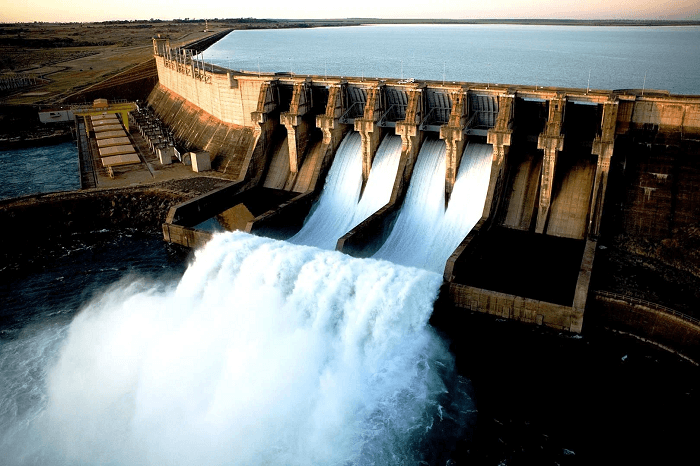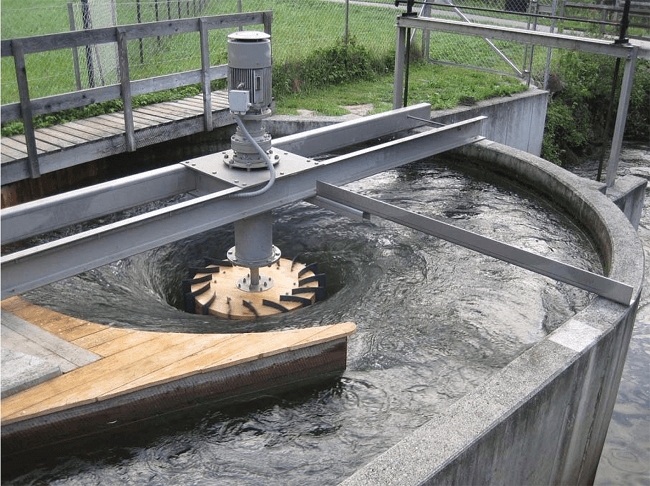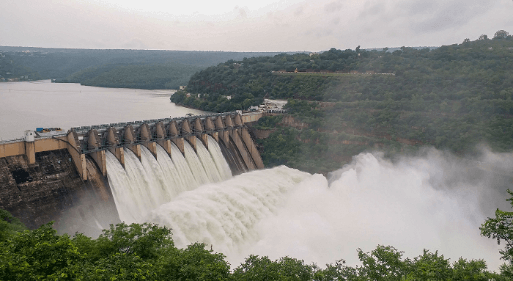Advantages and Disadvantages of HydropowerHydroelectric energy, also known as hydroelectric power or simply hydropower, is a form of energy that harnesses water's power to generate electricity. People have used this force for millennia. People in Greece used flowing water over two thousand years ago to power their mills to grind wheat into flour. Water is the source of hydroelectric power. It can be used to generate electricity in winter or spring from clear lakes and streams. When water falls under the force of gravity, it can be used to power turbines or generators that generate electricity. 
Modern technologies and growing populations require large amounts of electricity to create, build and expand. Many nations are dependent on hydroelectric power. Hydroelectric plants provided up to 40% of all the electricity produced in the 1920s. While this method has produced more energy over time, other power plants have produced more. Hydroelectric power currently supplies only ten percent of the United States' electrical power. Because hydropower can respond quickly to rapidly changing loads or system disturbances, it is an important contributor to the national power grid. This is something base-load plants powered by combustion or nuclear cannot do. How does hydroelectric energy work?Hydroelectric power plants usually have a water reservoir and gate or valve controlling how much water is pumped out. They also have an outlet where water flows down. All this forms a part of their equipment. Water can be used to spin the turbine blades to produce electricity that is then distributed to customers. Water is able to gain potential energy when it flows downhill or spills over a dam. As water flows downhill, the potential energy becomes kinetic energy. Hydroelectric Energy Plants: TypesThere are three types of hydroelectric power plants. The most popular is an impoundment facility. A dam is used in an impoundment facility to regulate water flow from a reservoir or pool. Water is released from the dam when more energy is required. Once the water has been released, gravity takes control and water flows down through a turbine. The turbine's blades spin to power a generator. 
A diversion facility is another type of hydroelectric power plant. This plant is different because it doesn't use a dam. It uses a network of canals to channel river water toward the turbine-powering generators. A pumped-storage facility is the third type of plant. This plant stores nuclear, solar, and wind energy for future use. The plant stores energy by moving water uphill from a pool located at lower elevations to a reservoir at higher elevations. The higher pool releases water when there is a high demand for electricity. This water returns to the lower reservoir and turns a turbine to produce more electricity. What is the Global Use of Hydroelectric Energy?Hydroelectricity is the most widely-used renewable source of electricity. Hydropower accounts for approximately 71% of all the world's renewable electricity. China is the world's largest hydroelectricity producer. The United States, Brazil, and Canada are also top hydropower producers. What is the largest hydroelectric power plant in the world?China's Three Gorges Dam, which blocks the Yangtze River, is the largest hydroelectric dam worldwide in terms of electricity production. It measures 2,335m (7,660ft) in length and is 185m (607ft) high. The dam has enough generators for 22,500 megawatts of power. Advantages of Hydropower
1. Renewable Hydropower is 100% renewable. This means that it won't run out of water unless it stops flowing. Hydro plants are durable because they can withstand the elements of nature. Sometimes equipment built for 25 years can still be used for as much amount of time. 2. Emission-free Hydroelectricity does not emit any harmful gases or chemicals into the atmosphere, unlike the burning of fossil fuels and dumping of nuclear waste. This is the greatest appeal of any source of renewable energy. 3. Reliable Hydropower is the best source of renewable energy. Water is usually available 24/7, so it doesn't matter if the sun sets or the wind blows. It'll always be available for generating electricity. 4. Adjustable Hydropower is so reliable that hydro plants can adjust the flow of water. This allows the hydro plant to either produce more energy when it is needed or decrease its output when it's not. This is something no other renewable energy source can achieve. 5. Create Lakes for recreation as well Example: Lake-Mead You can use lakes for recreation and even attract tourists. Lake Mead is a great example. It was made possible by the Hoover dam, which attracted more than 7.5 million people in 2018. It can provide a boost to nearby communities economically. 6. Land Development is Faster Hydro dams cannot be built in certain locations. However, they can be used to develop land for nearby cities and towns. It takes a lot to build a dam. Highways and roads are required to transport equipment for building the dam, which opens up new routes for rural communities. Disadvantages of Hydropower1. Impact on marine life A running water source must also be blocked to create a hydro-plant. This stops fish from reaching their breeding grounds, which then affects all animals that rely on them for food. Riverside habitats that are surrounded by water stop flowing and will disappear as well. This can lead to animals being unable to access water. 2. Limited Plant Locations Hydropower is renewable, but there are only a few places that can be used for plant construction. Some of these locations are far from major cities, which could make it difficult to harness the energy fully. 3. Higher initial costs Although hydro plants are not difficult to construct, they do require that you build a dam in order to prevent water from running. They are, therefore, more expensive than similar-sized fossil fuel plants. They won't have to worry about fuel purchases later. It does work out in the long term. 4. Methane and carbon dioxide emissions Although the electricity generated at the plant does not create any emissions, there are some emissions from the reservoirs they build. Plants in the bottom of a reservoir start to decay. When they die, they discharge huge quantities of methane and carbon, which pollutes the environment. 5. Highly susceptible to droughts While hydropower is the most reliable source of renewable energy, it's dependent on the quantity of water present in any particular area. This means that the efficiency of a hydropower plant can be greatly affected by drought. As the climate continues to warm our planet, this may be more frequent. 6. Flood Risk If dams are constructed on higher levels, they pose an extremely serious risk to the towns that lie below them. Although these dams are of great strength, there are risk factors. The largest dam failure ever recorded has been the Banqiao Dam failure. Because of the excessive rainfall caused by a typhoon, the dam fell. This led to the deaths of 171,000 people. Hydropower Is Still GrowingHydropower has been growing steadily as the world is beginning to move away from fossil fuels to power its energy. It's important to remember that there are numerous benefits and drawbacks to hydroelectric power. But when you consider the dangers that climate change poses, it's definitely better than any fossil fuel-based energy plant. With over 8,700 new hydropower plants planned for Europe, it is more vital than ever before to know the negatives. |
 For Videos Join Our Youtube Channel: Join Now
For Videos Join Our Youtube Channel: Join Now
Feedback
- Send your Feedback to [email protected]
Help Others, Please Share










